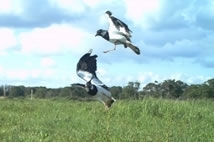 By Lizzie Grayshon, Waders for Real Project Ecologist
By Lizzie Grayshon, Waders for Real Project Ecologist
As the days get longer and we start to see signs of spring, one thing many of us look forward to hearing is the ‘pee-wit’ call of the lapwing. The lapwing is an iconic British bird distinctive not just by its call, but also by its rounded wing shape in flight and great crest when on the ground.
I, along with many others, find the breeding strategy of the lapwing extremely interesting as they breed on both water meadows where wet features are favoured and on bare patches of arable land where ditches and pools are nowhere to be seen.
In the Avon Valley the large flocks that over-winter here begin to break up and many birds leave the Valley towards the end of March. This winter we have seen flocks of up to 1000 birds strong feeding on the flooded water meadows. These are a spectacle to watch as they move as one through the sky.
Many of these birds will not breed in the Avon Valley but head off to arable land across the UK. However, some birds will stay and as of March the males begin to set up their breeding territories on the water meadows with the hope of attracting a female.
A male lapwing is not shy when it comes to showing off a territory, his calls can be heard from many fields away and his acrobatic flight skills are exciting to watch. He will create many small scrapes on the ground and display these to prospective females by bobbing his tail up and down.
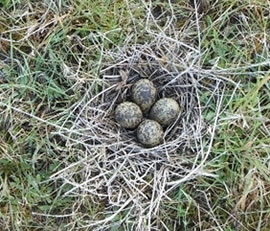 Once a female has selected a scrape to use she will then line it with a layer of dead grass. She will lay one egg a day until four eggs have been laid, then begin incubating.
Once a female has selected a scrape to use she will then line it with a layer of dead grass. She will lay one egg a day until four eggs have been laid, then begin incubating.
A lapwing nest is very neat, each piece of grass is placed carefully in the scrape before the eggs are laid. The four eggs are positioned with the ends all pointing inwards, the female will carefully turn the eggs over during incubation that lasts for around 25 days.
Depending on the length of the grass, lapwings can either be quite obvious or completely hidden when sitting on a nest. When nesting on water meadows you are normally only able to see the head and the tail pointing out above the grass. The male is often standing guard nearby looking out for any danger.
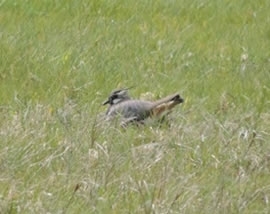 Once nesting begins the lapwings face a number of potential difficulties, one of which is predation. Once the nesting process has begun the lapwing pair will chase off any potential avian predators which fly close to the nest, including Corvids and Raptors.
Once nesting begins the lapwings face a number of potential difficulties, one of which is predation. Once the nesting process has begun the lapwing pair will chase off any potential avian predators which fly close to the nest, including Corvids and Raptors.
Lapwing often nest in small colonies with several pairs nesting close together, which is extremely useful when it comes to deterring predators as they can work together to chase them off.
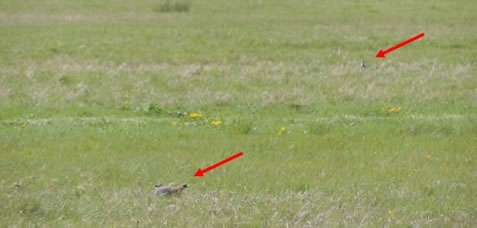 The red arrows show two female lapwing nesting within 20 meters of each other.
The red arrows show two female lapwing nesting within 20 meters of each other.
Another potential threat is the rise in water level, so many lapwing will nest on a slightly raised area which will hopefully provide some protection from rising water levels.
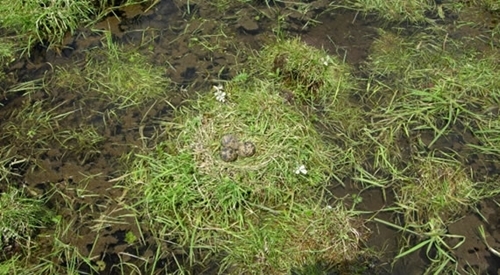
We always try to cause as little disturbance as possible when nest finding, once a female is spotted on the nest we take our time to pin point the exact location before approaching. This allows us to find the nest very quickly and take the necessary measurements without causing any harm. All nest monitoring is done under strict licence and by trained individuals.